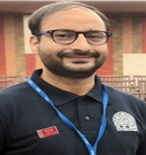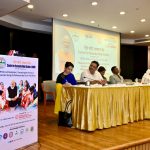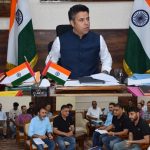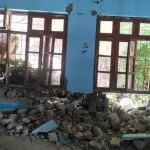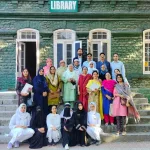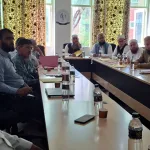It’s summer in Kashmir—lush, glowing, and deeply nostalgic. Yet, despite the beauty around me, peace was hard to find, especially on the roads. As I arrived a day before Eid, one of my friends in my home town Tral mentioned that the police had seized several large bikes from young riders who were creating havoc in Kashmir. Later, I caught the same on radio news—clear and firm: the police were finally cracking down. But I saw a different story when I stepped onto the highway—a louder story. What I witnessed wasn’t control—it was chaos.
Young boys—some barely in their teens—flying through the streets on two-wheelers like they were born to break the rules. No helmets. No licenses. Three or four on a bike. Zig-zagging between pedestrians and cars as if the road were their private racetrack. What was this madness? This wasn’t youthful energy anymore. It was a silent crisis unfolding in broad daylight.
And it wasn’t limited to highways. I witnessed rash driving even in rural areas with narrow roads, where every turn should invite caution, not carelessness. There was a time when we used to play on roads—such was the level of confidence and safety. Today, kids and even elders are not safe in the streets.
I love my homeland. I love its energy and it’s potential. But I have to say it honestly—what’s happening on our roads is terrifying. And the silence around it is equally dangerous. Who is responsible? Is it the boy who doesn’t understand the risk? Or the parent who handed him the bike? Is it society which laughs off stunts and calls it ‘masti’? Or is it the money that buys machines without teaching meaning?
The truth is that we are all responsible. And families, especially, have a critical role to play. It’s time we ask hard questions. Can a parent whose child causes an accident be held accountable? Can a six-month job suspension be considered for those who, despite warnings, allow their minor children to ride without licenses? Can shops owned by such parents be sealed temporarily to send a message? Can families be made to face serious, tangible consequences—not out of revenge, but as a public lesson? Or perhaps we need to consider alternative measures that can bring real relief.
If a child dies, it’s not just a personal loss—it’s a societal tragedy. And when a child kills or injures someone due to reckless driving, it’s not just his mistake—it’s a failure of parenting, of values, of collective attention. We cannot correct the youth unless we correct the homes they come from. Action has to be strict—not symbolic. Deterrence works when consequences are real. If parents know their livelihoods, reputations, and routines are also at risk, they will think twice before handing over the keys. Awareness without accountability is just a noise.
And the danger isn’t just in the wrong hands—it’s in the wrong mindset. We keep saying, “They don’t have licenses,” “They don’t wear helmets.” But the real problem is deeper. Rash driving is not a helmet issue. It’s a head and heart issue. We have youth with high energy, no direction, high power, no awareness, high speed, and no values.
But it’s not too late. I genuinely believe we can change this narrative—if we act together. The police have taken the first step, and their efforts must be supported. But let’s not leave this only to enforcement. Let schools and colleges take this seriously—let road safety and responsible riding be part of real education, not just exam syllabi. Organize awareness sessions, real-life stories, simulations, and interactions with accident victims or traffic police. Let our young minds understand the cost of a thrill.
Let mosques and religious institutions contribute. Friday sermons should speak not only of spiritual purity but also of social responsibility. Remind our youth that Islam and every religion stand for the preservation of life—not showing off, not risking others’ safety. Let the message echo through pulpits and public announcements: Driving responsibly is not weakness but wisdom.
Importantly, let sports centers, gyms, and fitness hubs also become partners in this mission. These are places where our youth gather, where discipline and strength are celebrated. Let gym trainers, sports coaches, and fitness influencers use their influence to promote road safety and self-control. If a body can be trained, so can the mind. Let our gyms build not just muscle but maturity. Let sports coaches remind every young player that being fit also means being accountable.
We must make it a collective mission. Because the truth is—this is not someone else’s issue. It’s yours. It’s mine. And if we don’t fix it now, we’ll only meet each other at funerals, hospitals, or courtrooms. This is not just a public nuisance—it’s a public emergency. I say this not just as a teacher, not just as a writer, but as a parent who knows that someday, my child might be tempted by the same chaos. I want him—and every other young rider—to know that real strength is in saving lives, not risking them.
Let’s wake up—before the next screech of tyres becomes another scream of loss. Let’s ride with dignity. Let’s live responsibly. Let peace return—not just to the hills, but to the roads and highways.
(The Author is Associate Professor, Department of Management, Convener Institution’s Innovation Council at ITM Gwalior and an IIMA (FDP) Alumnus. He is also pursuing Advanced Business Consulting Programme by AIMA and can be reached at [email protected])


